 ×
×
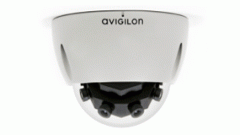
With a variety of wide angle surveillance cameras on the market, it is important to understand the differences in capabilities and results in order to design a high definition surveillance system built to meet your specific needs.
Download PDF: Ultra Wide Angle Surveillance
A powerful tool for covering large areas in high resolution, megapixel and HD surveillance cameras can reduce system costs by replacing multiple cameras and improving investigations by capturing better, and more useful, evidence. While megapixel IP surveillance cameras are now in mainstream use, a new category of cameras developed specifically to cover ultra wide scenes with fewer cameras is also becoming increasingly available. But with a variety of wide angle surveillance cameras on the market, it is important to understand the differences in capabilities and results in order to design a high definition surveillance system built to meet your specific needs.
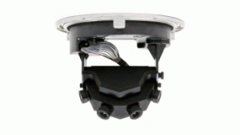 When you consider the surveillance requirements of a 10 m by 10 m building lobby, the need for ultra wide angle surveillance cameras becomes evident. In a traditional configuration, a camera would need to be installed in every corner for complete coverage, particularly if there are multiple entrances or areas of activity along each wall. Alternatively, purpose-built megapixel surveillance solutions targeted at 180 or 360 degree imaging can provide the coverage required to monitor the entire area, with fewer cameras. If central mounting is possible, a single 360 degree camera can give you complete coverage, but if it isn’t practical to mount a camera in the center of the room, two 180 degree cameras on opposing walls can deliver the same coverage. In both cases, the number of cameras needed is reduced along with the associated installation and service costs.
When you consider the surveillance requirements of a 10 m by 10 m building lobby, the need for ultra wide angle surveillance cameras becomes evident. In a traditional configuration, a camera would need to be installed in every corner for complete coverage, particularly if there are multiple entrances or areas of activity along each wall. Alternatively, purpose-built megapixel surveillance solutions targeted at 180 or 360 degree imaging can provide the coverage required to monitor the entire area, with fewer cameras. If central mounting is possible, a single 360 degree camera can give you complete coverage, but if it isn’t practical to mount a camera in the center of the room, two 180 degree cameras on opposing walls can deliver the same coverage. In both cases, the number of cameras needed is reduced along with the associated installation and service costs.
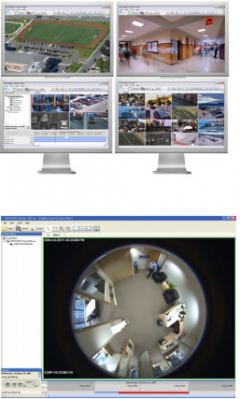
Fig 1
Today, two options are available on the market for gaining 180 and 360 degree coverage from a single camera: a specialized lens on a single sensor or a camera that integrates multiple sensors with conventional lenses aligned to provide ultra wide angle coverage. Single camera solutions for ultra wide angle coverage use a specialized lens called a fisheye lens, which uses different optical design techniques compared to conventional lenses that can lead to the distortion of the captured image when viewing beyond a 90 degree horizontal field of view. For example, what is referred to as ‘barrel’ distortion can occasionally occur, where a circular image is created and straight lines within the captured image appear curved. Software can sometimes correct this optical distortion, but it is typically a very processor-intensive task that requires proprietary algorithms.
The fisheye lens is also limited by the way it projects the captured image onto the image sensor. As a consequence of its design, the 180 and 360 degree fisheye lens creates either an oval or circular shaped image, problematic because all image sensors used in surveillance cameras are square or rectangular. As a result, a 180 or 360 degree fisheye lens is never able to use all the pixels available in the sensor, as you can see in the example image in figure 1.
Although fisheye lenses have been used in photography since the early 1900s, their adoption in the surveillance industry hasn’t occurred until fairly recently, in part because of the introduction of IP HD and megapixel surveillance cameras. Covering an ultra wide 180 or 360 degree field of view with conventional analog technology was ineffective because the resulting images had no detail.
The second option that can be used to achieve 180 or 360 degree coverage indoors is a compact, multi-sensor camera that uses four 2MP sensors with compact, pre-installed conventional lenses. In a four sensor, 180 degree multi-sensor camera, each lens covers a 45 degree field of view, while in a four sensor 360 degree camera, each lens covers a 90 degree field of view. A compact, multi-sensor camera offers several advantages: the images are captured without distortion and deliver an easily measured and quantifiable amount of pixels-on- target consistently throughout the scene.
Designed with a dome form factor, compact multi-sensor cameras use one network cable for power and to transmit video for the images from all four sensors, resulting in a quick and convenient installation. The use of conventional lenses also means that every pixel on each sensor is utilized to capture the image, maximizing overall image quality without wasting any pixels.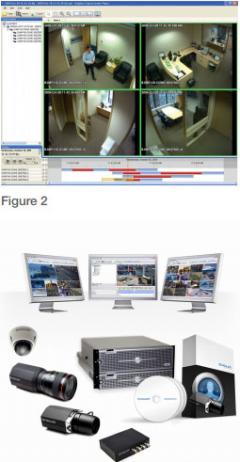
The two approaches offer dramatic differences in detail, security, and coverage. Take the example of a 10m by 10m building lobby with a single 360 degree camera mounted in the center. Using a circular fisheye lens and a 3MP camera with a resolution of 2048 x 1536, you capture the room with a distorted circular image and a diameter of 1536 pixels. The circular image has a circumference of 4825 pixels covering the 40 meter perimeter of the room, or roughly 120 pixels per meter at the edge of the room. A multi-sensor 360 camera using four 2MP sensors has 6400 pixels of total horizontal resolution across the four streams, resulting in 160 pixels per meter of detail around the perimeter of the room. As a result, only the multi-sensor solution provides sufficient detail to identify faces around the perimeter of the room. In addition, using a simple formula dividing the width of the image sensor by the scene covered, the multi-sensor solution delivers improved resolution in the balance of the image. The circular projection of the fisheye lens means that this math can only be done easily at the perimeter of the image. The distortion of the circular fisheye image delivers the least amount of detail at the perimeter and the most in the center of the room. However, concentrating image detail in the center of the image in most configurations is typically wasted because a single sensor fisheye camera will only capture the tops of heads directly beneath the camera.
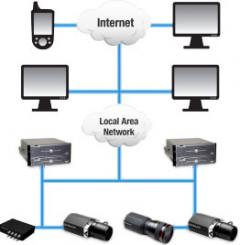
The introduction of megapixel surveillance cameras has improved these limitations, but there are still important concerns to be aware of when coupling ultra wide angle lenses with megapixel surveillance cameras. Advanced surveillance system design must now address the concept of pixels-on-target – the ability to quantify the detail of the image being captured during design and verify it during installation. However, pixels-on-target can only be easily calculated when conventional lenses are used, because ultra wide angle lenses distort the scene when captured. As a result, you can no longer guarantee the amount of pixels-on-target at any point in the image.
While effective coverage of ultra wide angle scenes is a great way to leverage the resolution of multi megapixel IP surveillance cameras to reduce system costs, multi megapixel surveillance cameras pose unique challenges with bandwidth, storage, and management that need to be properly addressed. Purpose-built network video management software (NVMS) platforms are now available that are tailored for HD and megapixel surveillance and can be used to ensure that all the evidence captured by a 180 or 360 camera is stored and managed effectively.
Being aware of the advantages and disadvantages of each option for ultra wide angle coverage is the first step towards designing a high- performance and cost-effective high definition surveillance system for any space – both indoors or out. With a clear understanding of the approaches taken to ultra wide angle surveillance, integrators and end- users can more effectively build a high definition surveillance system that delivers complete coverage and ultimately, unmistakable evidence for improved investigations.